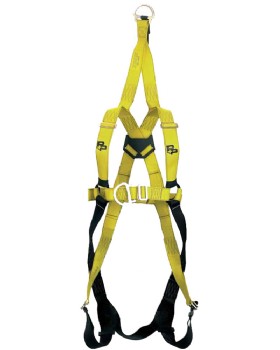
Following systems are perfectly suited for rope access techniques: buildings that require periodic maintenance work related to window cleaning or glass replacement. In places where work is performed regularly, special anchoring devices are installed to facilitate work in the suspension. Rope access is widely used, among others on drilling platforms, in industrial plants, construction. It is an excellent solution for reaching places that are difficult to reach or inaccessible for standard techniques of working at height. where conventional methods such as ladders, lifts, scaffolding and others are relatively expensive in relation to the size and scope of the work. Rope access works are performed wherever it is economically justified, i.e. The most popular system defining the rules of work in rope access is the international association IRATA (Industrial Rope Access Trade Association). Persons carrying out work as rope technicians must have received appropriate qualification training in rope access techniques and rescue rules. Safety harness with hip harness for suspension work. – Anchor devices – EN 795 (except type C)

– Clamping devices – EN 12841 type B, or EN 567 – Belaying devices – EN 12841 type A or EN 353-2 The main difference between climbing, cave and industrial techniques is the equipment used, which must comply with the relevant standards defining their use in work at height. These systems are used in conjunction with a harness and other devices to move on the ropes. During such works, a two separately anchored and coordinated line systems are used – one for carrying out works and one for safety. It was created through the use of climbing and cave techniques for industrial work. While our book selection reflects the leading authorities and most popular texts, as with all publications, recent developments in equipment and practices may not be included.Rope access is a type of work at height carried out in a suspension or in a support. Please Note: CMC recognizes that there are many different techniques in rescue. However, there is no substitute for proper training and time in the field for gaining the skills needed to provide safe and effective emergency assistance.

We have compiled an outstanding selection of books on rescue. Test results of contamination on polyester ropesĭownload the free CMC Field Guide App for access to an electronic version of the Field Guide.Techniques for belaying with the CLUTCH.The 6th Edition includes the following updates: The spiral-bound guide measures 10 cm (4”) W x 15.2 cm (6”) H and fits into radio harnesses, BDU and uniform pockets, so you can take it anywhere! It features water- and tear-proof stock for lasting durability. The companion Field Guide to the CMC Rope Rescue Manual includes updated rope rescue techniques written and edited by our founder, Jim Frank, and former CMC School Director, John McKently. 6th Edition by Jim Frank and John McKently


 0 kommentar(er)
0 kommentar(er)
